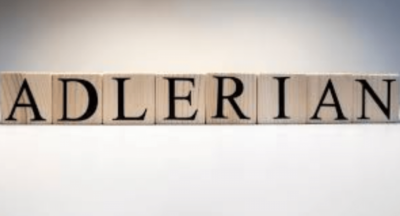
Understanding Strokes in Transactional Analysis
Introduction
Transactional Analysis (TA) is a psychological theory and therapy framework developed by Eric Berne in the 1950s. It aims to understand and improve human interactions by analyzing the transactions between individuals.
What are Strokes in Transactional Analysis?
In TA, strokes refer to the basic unit of recognition or acknowledgment that individuals give and receive from others. They can be verbal or non-verbal and can range from simple gestures to more complex forms of communication.
Four Types of Strokes in Transactional Analysis
Strokes can be classified into four types based on their nature and impact:
1. Unconditional Positive Strokes
Unconditional positive strokes are genuine expressions of recognition, appreciation, and support given to others without any conditions attached. These strokes convey warmth, acceptance, and encouragement. Examples of unconditional positive strokes include compliments, praise, and acts of kindness.
2. Unconditional Negative Strokes
Unconditional negative strokes are expressions of disapproval, criticism, or rejection given without any conditions. These strokes can be damaging to the recipient’s self-esteem and can hinder healthy interactions. Examples of unconditional negative strokes include insults, put-downs, and harsh judgments.
3. Conditional Positive Strokes
Conditional positive strokes are recognition or acknowledgment given to others only when certain conditions are met. These strokes can be motivating and encourage individuals to meet expectations or standards. Examples of conditional positive strokes include rewards for achieving goals, promotions, and positive feedback based on performance.
4. Conditional Negative Strokes
Conditional negative strokes are expressions of disapproval or criticism given when certain conditions are not met. These strokes can be used to enforce boundaries or discourage certain behaviors. Examples of conditional negative strokes include punishments, reprimands, and negative feedback based on performance.
| POSIVE STROKES ( APPRECIATION) | NEGATIVE STROKES (BLAMING & INSULTING) | |
| Unconditional (What you are / Being) |
“I love you.” ` You can do’ |
“I hate you.” `You are an idiot’ |
| Conditional (What you do / Doing) |
“I like you when you smile.” |
“I don’t like you when you are sarcastic.” |
Assessment of Strokes in Transactional Analysis
Understanding the patterns and impact of strokes is crucial in TA. The assessment of strokes involves analyzing the quantity, quality, and distribution of strokes received and given by individuals.
Stroke Filters
Stroke filters refer to the internal beliefs and biases that influence how individuals perceive and interpret strokes. These filters can be shaped by past experiences, cultural norms, and personal values. They can either enhance or distort the reception of strokes.
Stroking Profile
A stroke profile is a comprehensive analysis of an individual’s stroke patterns. It includes an assessment of the types of strokes received and given, the balance between positive and negative strokes, and the impact of stroke filters on the individual’s interactions.
When it comes to giving and receiving strokes many of us use a series of repetitive, unconscious patterns – never thinking about what we are doing. Since strokes are fundamentally involved (directly or indirectly) in everything we do, it will be of great help to become aware of what is known as our ‘stroking profile’.
The stroking profile helps to measure how a person gives and receives strokes in four categories as mentioned above:-
- Giving strokes is ok
- Saying no is ok
- Taking strokes is ok
- Asking for strokes is ok
The profile takes the form of a table to be completed (see below) and makes us think about how we give and receive strokes. This can be an effective therapeutic tool as a person can then decide if they would like to change any part of their stroking profile. For example, a person may decide to stop discounting positive strokes and to ask for more of them. The profile can also help people understand their pattern. A person may not have understood why they receive so many negative strokes. The profile can help them to realize that they’ve been constantly asking for these negative strokes on an unconscious level. That may be because these kinds of strokes are familiar to them and they know how to react, whereas receiving positive strokes makes them feel extremely uncomfortable. (Of course, it could also be for a number of other reasons).
Maybe some people complete the table and realize that they have difficulties in giving strokes. By becoming aware of this, they can make a small conscious effort to gradually offer more strokes.
Positive Strokes
How often do you:
| Give positive strokes to others? | Refuse to give the positive strokes others expect from you? | Accept positive strokes? | Ask others for positive strokes? | |
| Usually | ||||
| Always | ||||
| Frequently | ||||
| Often | ||||
| Rarely | ||||
| Almost Never |
Negative Strokes
How often do you:
| Give negative strokes to others? | Refuse to give negative strokes? | Accept negative strokes? | Ask others (even indirectly) for negative strokes? | |
| Usually | ||||
| Always | ||||
| Frequently | ||||
| Often | ||||
| Rarely | ||||
| Almost Never |
Implications of Strokes in Transactional Analysis
The way strokes are given and received can significantly impact individuals’ self-esteem, relationships, and overall well-being. Positive strokes contribute to a healthy and supportive environment, while negative strokes can lead to emotional distress and strained interactions.
Understanding strokes and their implications in TA can help individuals become more aware of their communication patterns and make conscious efforts to provide and receive strokes in a constructive and nurturing manner.
Conclusion
Strokes play a vital role in Transactional Analysis, shaping the quality of human interactions. By recognizing and understanding the different types of strokes and their implications, individuals can foster healthier relationships and create a more positive and supportive environment.
Related Posts
Understanding Drivers in Transactional Analysis
Introduction Transactional Analysis (TA) is a psychological theory that helps...
A Comprehensive Guide to Adlerian Psychotherapy and its Benefits
Introduction Adlerian Psychotherapy, also known as Individual Psychology, is a...
Understanding Transactional Analysis: Principles and Ego States
Introduction Transactional Analysis (TA) is a psychological theory and...
Understanding Flow in Positive Psychology
https://www.youtube.com/watch?v=Iz6DnG47a9whttps://www.youtube.com/watch?v=pZ5wV2A...






Wow, fantastic blog structure! How lengthy have you been blogging
for? you made blogging look easy. The whole glance
of your web site is great, let alone the content material!
You can see similar: najlepszy sklep and
here sklep online